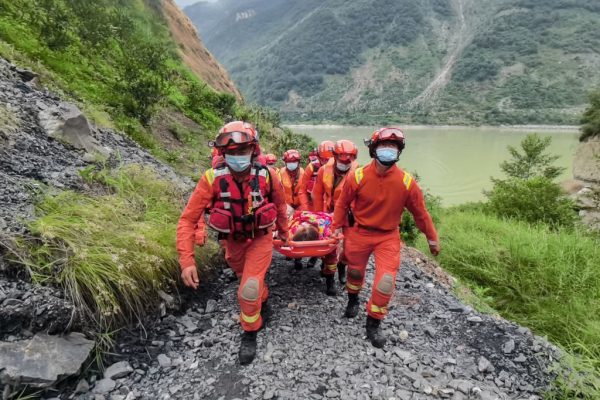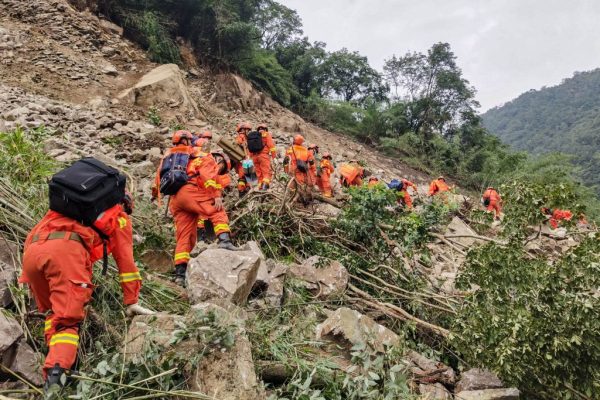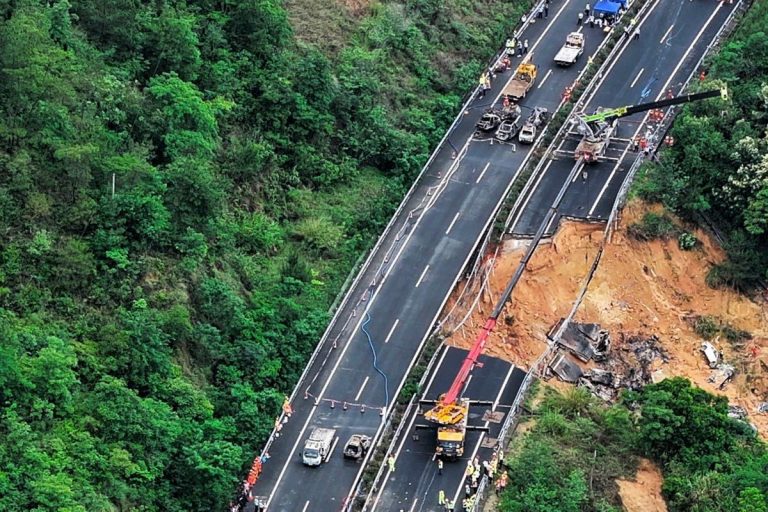A magnitude 6.8 earthquake struck China’s Sichuan province on Monday, Sept. 5 — the strongest to hit the region since 2017, killing more than 60 people and shaking the provincial capital of Chengdu as well as other nearby regions.
The death toll rose to 66 on Tuesday, Sept. 6, state media reported, with the number of casualties rising as rescue efforts begin. According to local authorities, over 250 people were injured during the quake.
Some roads and homes near the epicenter were damaged by landslides, while communications were down in at least one area, state television reported.

However, no damage to dams and hydropower stations within 50 km (31 miles) of the epicenter were reported, although damage to the provincial grid had affected power to about 40,000 end-users, state reports said.
The epicentre was at the town of Luding, the China Earthquake Networks Centre said, in the mountains about 226 km southwest of Chengdu.
Success
You are now signed up for our newsletter
Success
Check your email to complete sign up
Earthquakes are common in the southwestern province of Sichuan, especially in its mountains in the west, a tectonically active area along the eastern boundary of the Qinghai-Tibetan plateau.
Laura Luo, who lives in Chengdu, a city of about 21 million people, was on her way to her apartment block when she saw people rushing out of their high-rise apartments in a panic after receiving earthquake warnings on their phones.
“There were many people who were so terrified they started crying,” Luo, a PR consultant, told Reuters.
“All the dogs started barking. It was really quite scary,” she said, referring to when the quake began.
In Luding, the quake was “so strong that it was hard for some people to remain standing,” while cracks started to appear on some houses that looked dangerously close to collapsing, the China News Service reported.
Video clips on social media showed lights swinging while people rushed out of buildings into the streets.
Sichuan’s provincial government said more than 30 people had died in the region. At least four of those were in Luding.
‘Scariest [earthquake] since 2008’
A total of 39,000 people live within 20 km of the epicenter and 1.55 million within 100 km, according to state reports.
The quake was Sichuan’s biggest since August 2017, when one of magnitude 7.0 hit the Aba prefecture.
The most powerful Sichuan earthquake on record was in May 2008, when a magnitude 8.0 quake centered in Wenchuan killed almost 70,000 people and caused extensive damage.
Monday’s quake was also felt in the provinces of Yunnan, Shaanxi and Guizhou hundreds of kilometres away, according to state media.
Chengdu resident Samantha Yang, 23, was in bed about to take a nap when the quake struck.
“The building kept shaking, each time more severely than before,” Yang told Reuters. “Truly, this was the scariest one since the 2008 Wenchuan earthquake.”
Rescue efforts underway
State media footage, taken at the epicenter in Luding county, showed firefighters carrying an injured civilian on a stretcher across a makeshift bridge built with tree trunks as muddy torrents raged below them.

Evacuees who could walk followed a trail of scree alongside the river abutting slopes stripped of soil cover by the quake. Some of them were clutching onto their belongings while others carried injured people on their backs, a video from local media showed.
In another video, firefighters were seen carrying a woman on a stretcher, covered in dust and missing a shoe, out from a dangerously teetering four-storey wooden building.
As rescuers tried to reach stranded people, restore utilities and send emergency relief, state media reported 11,000 people had been evacuated from the area.
Authorities had identified around 500 potential geological hazards, according to the reports, referring to landslides and collapsed mountain roads.
(By Reuters. Additional reporting by Beijing newsroom, and Akriti Sharma in Bengaluru; Editing by Kim Coghill, Robert Birsel, Frank Jack Daniel and Jan Harvey)














